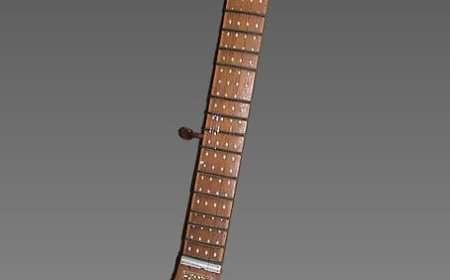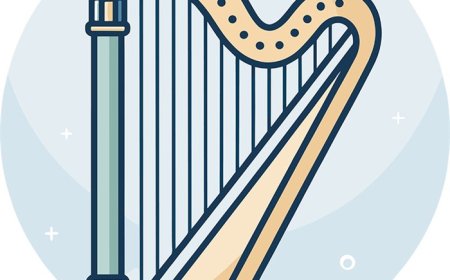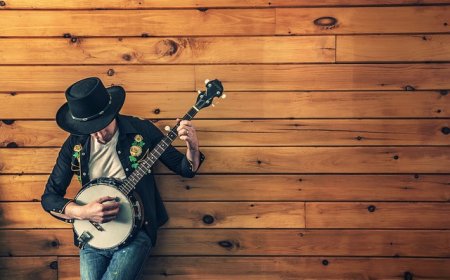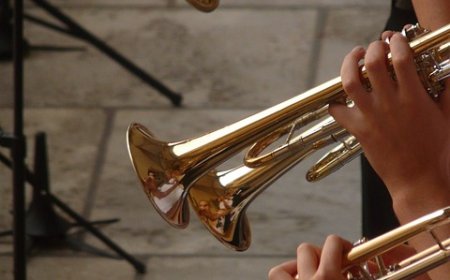Double Bass Facts for Kids – Learn About the Largest String Instrument
Discover the double bass for kids. Learn how this giant string instrument works, its role in symphony orchestras and jazz bands, and fun facts about its deep, rich sound.
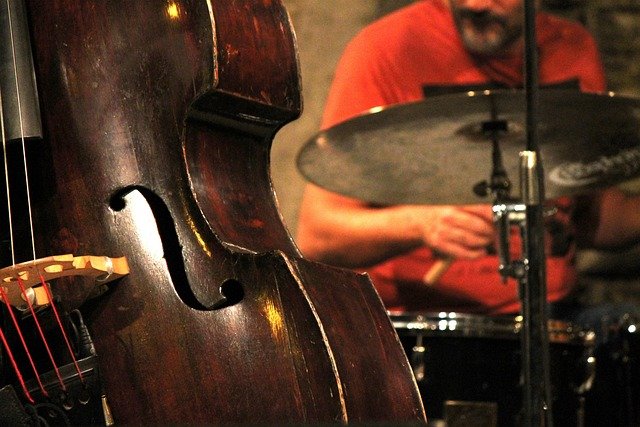
🎻 All About the Double Bass
🥇 Introduction
The double bass, also called the upright bass, string bass, or contrabass, is the largest instrument in the string family and plays the lowest notes. It's known for its deep, rumbling sound that supports the music from underneath. Whether in a symphony orchestra, a jazz trio, or a rockabilly band, the double bass helps keep the rhythm and harmony strong. With its tall body and thick strings, it takes strength, coordination, and musical feeling to play.
🎶 What Is a Double Bass?
The double bass is a bowed and plucked string instrument with four (sometimes five) strings. It is played while standing or sitting on a tall stool, and its music is written mainly in the bass clef.
The double bass is often used to:
-
Play low harmony notes in orchestras and bands
-
Provide the walking bass lines in jazz
-
Drive the rhythm and beat in bluegrass and rockabilly music
Though it looks similar to the cello, the double bass is larger, tuned lower, and has a different shape with sloped shoulders to make it easier to play.
🧩 Parts of the Double Bass
The double bass is made from large pieces of wood and includes many important parts:
-
Body - The large, hollow wooden structure that resonates sound
-
Strings - Usually four, tuned E, A, D, G (lowest to highest)
-
Fingerboard - Where the player presses the strings to change pitch
-
Bow - Can be French (held overhand) or German (held underhand)
-
Bridge - Lifts the strings above the body and transmits vibrations
-
F-holes - Openings on the front of the body that let sound out
-
Scroll - Decorative curve at the top of the neck
-
Tuning Pegs - Large pegs used to tune the thick strings
-
Endpin - A metal rod that rests on the floor and adjusts height
-
Tailpiece - Holds the bottom ends of the strings
Because of its size, players use different hand positions and special techniques like shifting to reach all the notes.
⚙️ How Does the Double Bass Work?
The double bass makes sound when:
-
The player draws a bow across the strings (arco) or
-
Plucks the strings with fingers (pizzicato)
The string vibrates and the sound is carried through the bridge into the body, which makes the sound louder and deeper. Because the strings are long and thick, they produce very low-pitched notes.
In orchestras, the bass usually plays with a bow. In jazz, it's often played pizzicato, using rhythmic and melodic lines. The deep sound helps keep the beat, harmony, and pulse of the music.
📜 History of the Double Bass
The double bass developed in Europe during the 1500s, around the same time as the violin and cello. It was influenced by earlier instruments like the viola da gamba, which had sloped shoulders and frets.
By the 1700s, the double bass became a standard part of the orchestra. In the 1800s and 1900s, it became important in:
-
Opera and symphonic music
-
Jazz, especially with walking bass lines
-
Rockabilly and blues, often with energetic plucking or slapping
-
Modern music, including movie scores and experimental pieces
Today, the double bass is essential in many musical styles and has its own solo and ensemble pieces.
🥁 Famous Double Bass Players
These musicians have made the double bass shine in many musical worlds:
-
Gary Karr - Classical bass soloist known for expressive performances
-
Ray Brown - Legendary jazz bassist who played with Oscar Peterson
-
Charles Mingus - Jazz innovator and composer known for powerful bass playing
-
Edgar Meyer - Combines classical, bluegrass, and jazz in his solo work
-
Esperanza Spalding - Modern bassist who plays jazz, sings, and composes
-
Paul Chambers - Important bassist in 1950s and 60s jazz
-
Sperger & Dragonetti - 18th-century bassists who composed and performed solos
🎶 Learning to Play the Double Bass
The double bass is a fun but physically demanding instrument to learn. Students develop:
-
Good posture and strength
-
A strong sense of rhythm and pitch
-
The ability to read bass clef and sometimes tenor or treble clefs
-
Special finger techniques like shifting, positions, and vibrato
Young beginners often use a 1/4 or 1/2 size bass, gradually moving up to full size. They learn:
-
Open strings and finger placements
-
Playing with a bow and plucking
-
Keeping steady time in group settings
-
How to tune, carry, and care for their large instrument
😄 Fun Facts About the Double Bass
-
The double bass is often over 6 feet tall with the endpin extended!
-
Some basses have 5 strings for even lower notes.
-
Jazz bassists often use slap bass, which combines rhythm and tone.
-
In orchestras, two bassists sometimes share one music stand because the parts are so similar.
-
Electric bass guitars were created to sound like the double bass-but with less bulk.
-
The double bass has been used in cartoons, video games, rock concerts, and ballet!
👧 Kid-Friendly Summary
The double bass is the biggest and lowest-sounding string instrument. You play it by standing up or sitting on a tall stool. It can play deep, strong notes with a bow or with your fingers. The double bass helps the music feel steady and full. It's great for jazz, orchestra, and even rock music!
📚 Vocabulary Words
Double Bass – The largest string instrument, with a deep sound
Pizzicato – Plucking the string with fingers
Arco – Playing with a bow
Shifting – Moving the hand up or down the fingerboard to reach different notes
Bass Clef – The music staff used for low-pitched instruments
Endpin – The metal rod that supports the bass on the floor
Walking Bass Line – A steady string of notes that outlines the chords in jazz
Slap Bass – A percussive style where the string is slapped and snapped
❓ Interactive Quiz (8 Questions)
1. What is the largest instrument in the string family?
A. Cello
B. Harp
C. Viola
D. Double Bass
2. How many strings does a standard double bass have?
A. Three
B. Four
C. Six
D. Eight
3. What is it called when a bassist plays with fingers instead of a bow?
A. Shifting
B. Slapping
C. Pizzicato
D. Vibrato
4. What clef is most often used to read double bass music?
A. Treble
B. Alto
C. Bass
D. Tenor
5. What part of the bass rests on the floor?
A. Scroll
B. Peg
C. Endpin
D. Chin rest
6. Which jazz bassist played with Oscar Peterson?
A. Edgar Meyer
B. Charles Mingus
C. Ray Brown
D. Yo-Yo Ma
7. What is the low string tuning of a double bass?
A. G-D-A-E
B. E-A-D-G
C. C-G-D-A
D. A-E-F-B
8. What is a “walking bass line”?
A. A solo with many jumps
B. A fast jazz rhythm
C. A steady line that outlines the chords
D. A march beat


















































